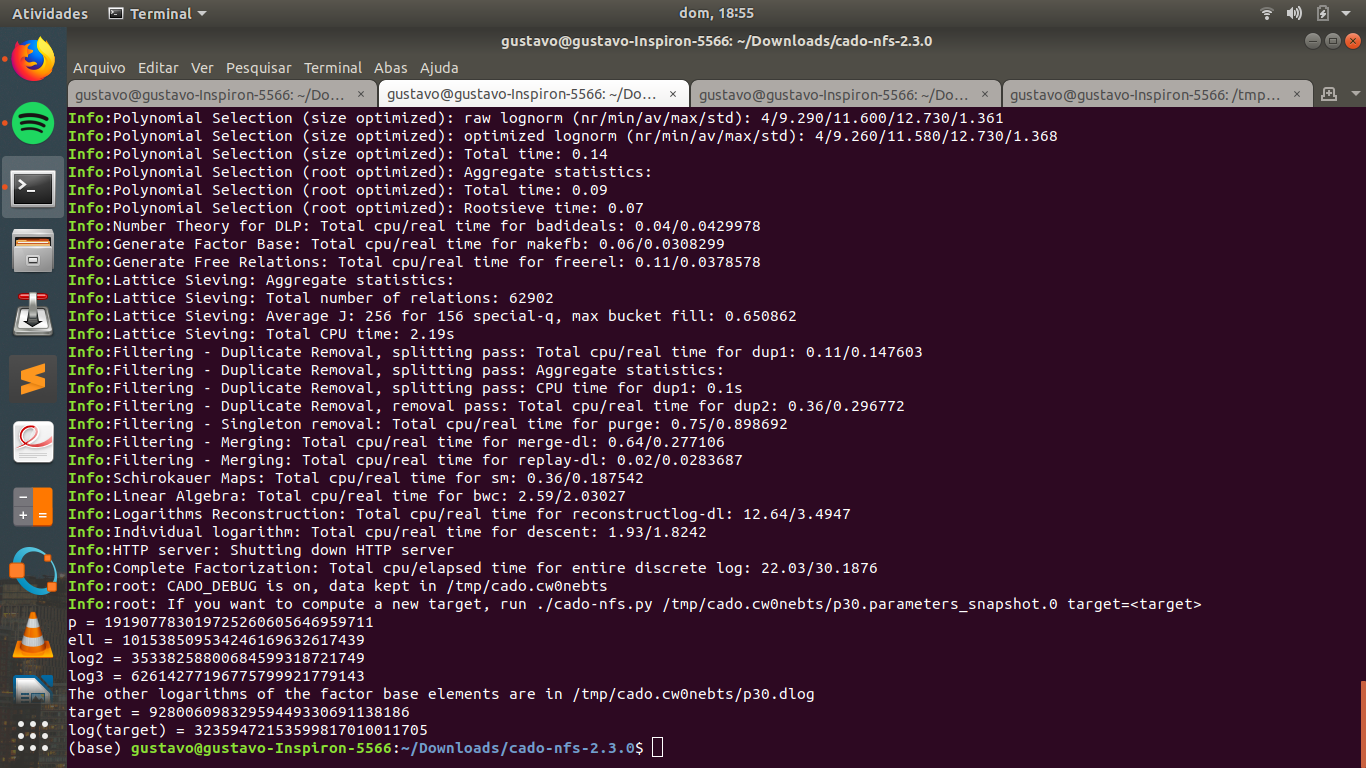All below from mail thread of [Cado-nfs-discuss] DLP and well explained with a sageMath code.
cado-nfs is right, but maybe the printed info is scarce or misleading.
Here's a verification script.
> sage: p=53236943330228380237618624445646085674945074907141464418703
> sage: ell=46188898894770668459
> sage: target=51415666321640196744601368459935322494639894379132878321944
> sage: logtarget=15315241815410699555
> sage: log2=39557689199984036821
> sage: redlog=ZZ(Integers(ell)(logtarget/log2))
> sage: (GF(p)(2)^redlog/target)^((p-1)//ell) 1
> sage: (GF(p)(2)^logtarget/GF(p)(target)^log2)^((p-1)//ell) 1
cado-nfs only computes the discrete logarithm of elements of GF(p)^*
modulo ell. And it won't tell you with respect to which base.
So you first have to decide on which generator you want (e.g., 2),
rescale logarithms so that this element has log 1, and then make sure
that your target has the right log mod ell. Which is equivalent to
saying that you have an equality in the subgroup of order ell, or in
other words that when you take the ((p-1)/ell)-th power, you get 1.
The last test of the script is the generic way to do pairwise
verification of two (x,log(x)) pairs.

